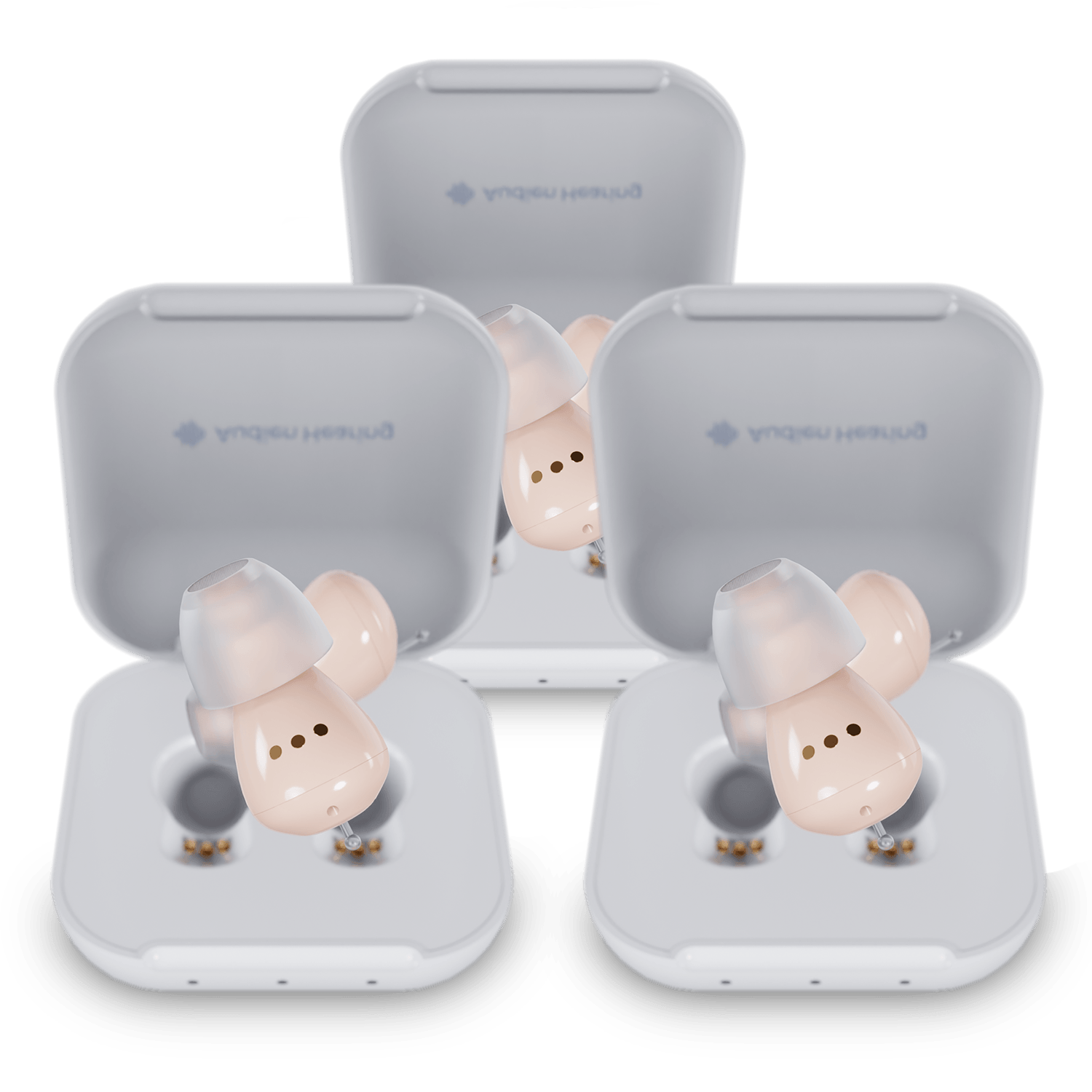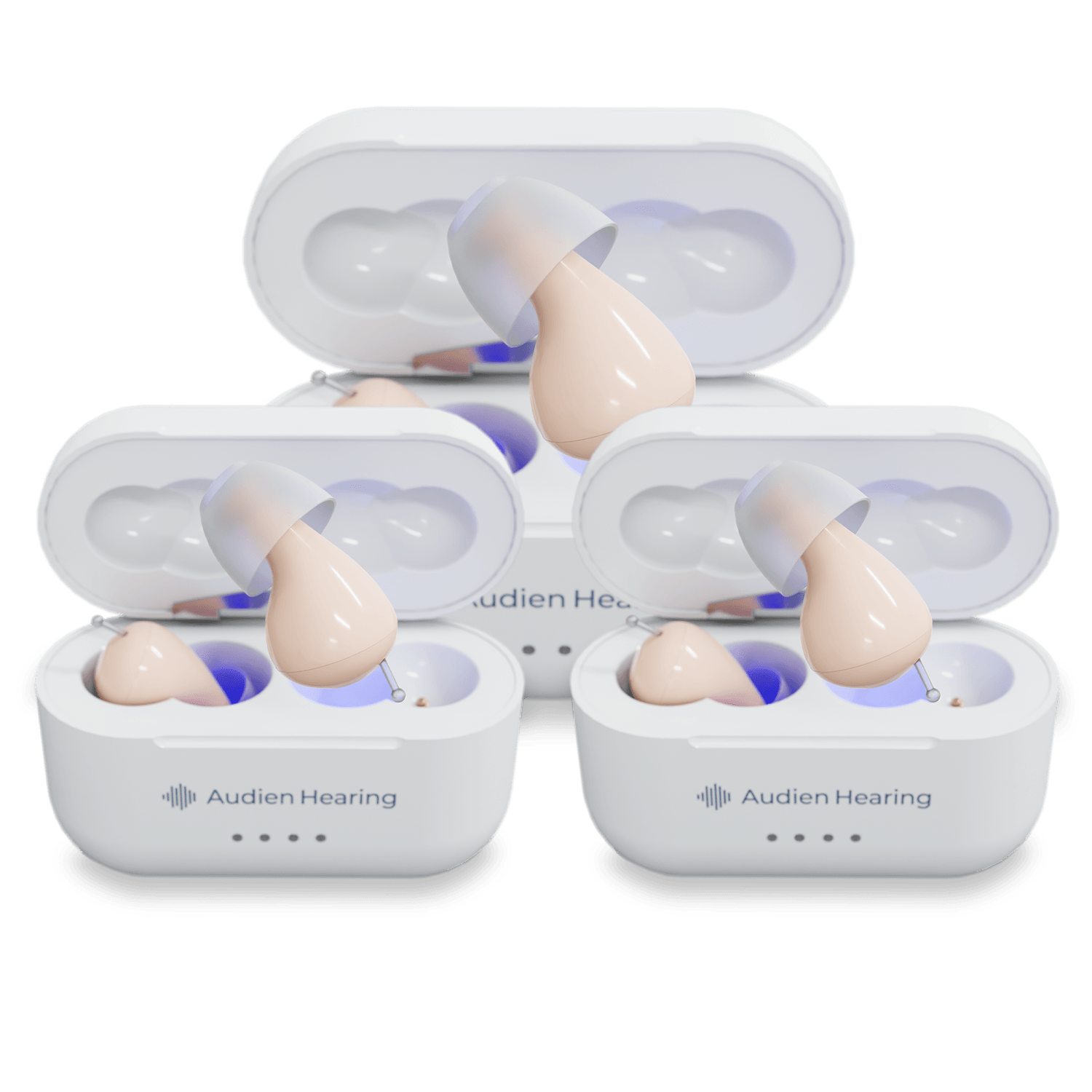A hearing aid is a small electronic device that helps you hear sounds more clearly. Wearable inside or behind your ear, it allows you to participate and communicate more effectively in your daily activities.
Hearing aids are not meant to correct your hearing—they function to merely enhance sounds according to the severity of your hearing loss. From speech to environmental sounds (bells ringing, cars honking, conversations occurring nearby, etc.), all types of sounds can be amplified with the help of a hearing aid.
How Do Hearing Aids Work?

There are three main parts to a hearing aid. Each plays a key role in delivering the right level of sound and frequency into your ear:
- Microphone: The miniature microphone converts sound waves into electrical signals, which are sent to the amplifier.
- Amplifier: The amplifier boosts the power of these electrical signals and sends them through the speaker. The level of amplification depends on the severity of an individual’s hearing loss. This is diagnosed during an evaluation by an audiologist.
- Speaker: The speaker receives the electrical signals and converts them into acoustic energy, or sound. This sound is delivered into your ear.
Different Types of Hearing Aids

There are several types of hearing aids with different designs and technical features. What people choose depends on their lifestyle and degree of hearing loss.
In-the-Ear Styles
In-the-ear styles are more discreet, and they are typically for people with mild to moderate hearing loss.
- Invisible-in-the-canal (IIC): IICs are placed deep within your ear, so they are invisible to the eye.
- Completely-in-the-canal (CIC): CICs are similar to IICs, but they do not sit as deeply within your ear as IICs do.
- In-the-canal (ITC): Larger than IICs and CICs, these aids sit in the lower part of your outer ear bowl, making them more visible. ITCs generally carry more features and functionalities than IICs and CICs, like a volume wheel (a manual volume control).
- Low-profile hearing aids: Low-profile aids come in half-shell and full-shell designs. Half-shells fill the lower half of your outer ear bowl, while full-shells fill your entire outer ear bowl. Because they are larger than the hearing aids listed above, they can accommodate more features and user controls.
Behind-the-Ear Styles
The structure of behind-the-ear hearing aids are different than in-the-ear styles. While the microphone, amplifier, and speaker lie within the body of in-the-ear aids, these components are separated in behind-the-ear styles. Behind-the-ear aids can be used by individuals with all levels of hearing loss.
- Receiver in-the-ear (RITE) or receiver in canal (RIC): The speaker of the hearing aid rests inside the ear canal while the microphone and amplifier sit in a small case behind the ear.
- Behind-the-ear with ear molds: These carry the same architecture as RITEs and RICs, but have ear molds that are custom-fitted to the size of your ear canal. These are commonly used for children, since these can be replaced easily as the child grows.
Do I Need a Hearing Aid?

If you don’t hear as well as you used to, you might need a hearing aid. This really depends on the kind of hearing impairment you have.
Keep in mind that the people who need hearing aids aren’t simply older adults. Although they make up the majority of the hearing loss population, many young individuals suffer from these impairments as well. Out of 466 million people worldwide who have a hearing loss, 34 million of them are children.
Signs of Hearing Loss
Oftentimes, your friends and family members notice your hearing loss before you do. But there are quite a number of early warning signs of hearing impairment that you can look out for in your behavior:
- You frequently ask people to repeat what they have said or to speak louder.
- You prefer the television or radio louder than others do.
- You have difficulty understanding what people are saying over the phone.
- You don’t understand all of the dialogue during a movie.
- You keep hearing a ringing or buzzing sound in your ears. This might be a sign of tinnitus.
If you feel you or a loved one is suffering from hearing loss or any other hearing impairment, be sure to visit an audiologist. They can conduct tests and determine whether a hearing aid will be beneficial.
Do I Need Two Hearing Aids?

This is a valid question. After all, we have two ears!
Whether you have hearing loss in both ears or one, you should talk with your physician about getting two hearing aids. Bilateral aids are not always recommended routinely by doctors. The recommendation may be specific to your hearing loss. But to give you a preview of their advantages, here are a couple of benefits people have experienced:
- Ability to pick up speech/sounds amid background noise. Because our brain is designed to use sound coming through both ears to understand our environment, two hearing aids can help your brain focus on specific sounds/speech, while tuning out other noise.
- Increased listening range and ability to locate the source of sounds. With bilateral hearing amplification, your brain can better decipher sound sources and help you focus on what someone is saying to you. People can also generally pick up quiet sounds and soft-spoken words better.
Where Can I Buy Hearing Aids?

You can purchase hearing aids at your audiologist’s office which may be in your doctor's office, at a manufacturer-owned hearing aid store, or online. Be sure to do your research and find an option that meets both your auditory and financial needs. If you have mild to moderate hearing loss, there are over-the-counter (OTC) hearing aids you can try.
Discover High-Quality and Affordable Hearing Aids at Audien Hearing














